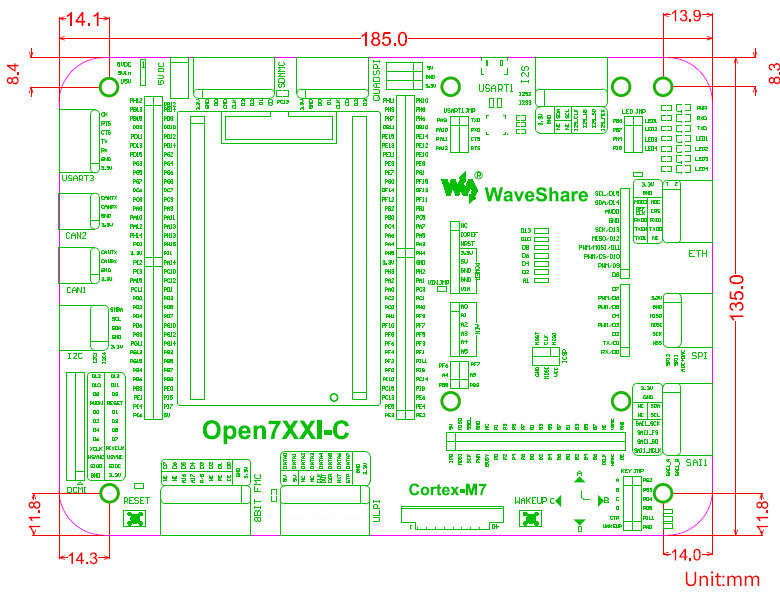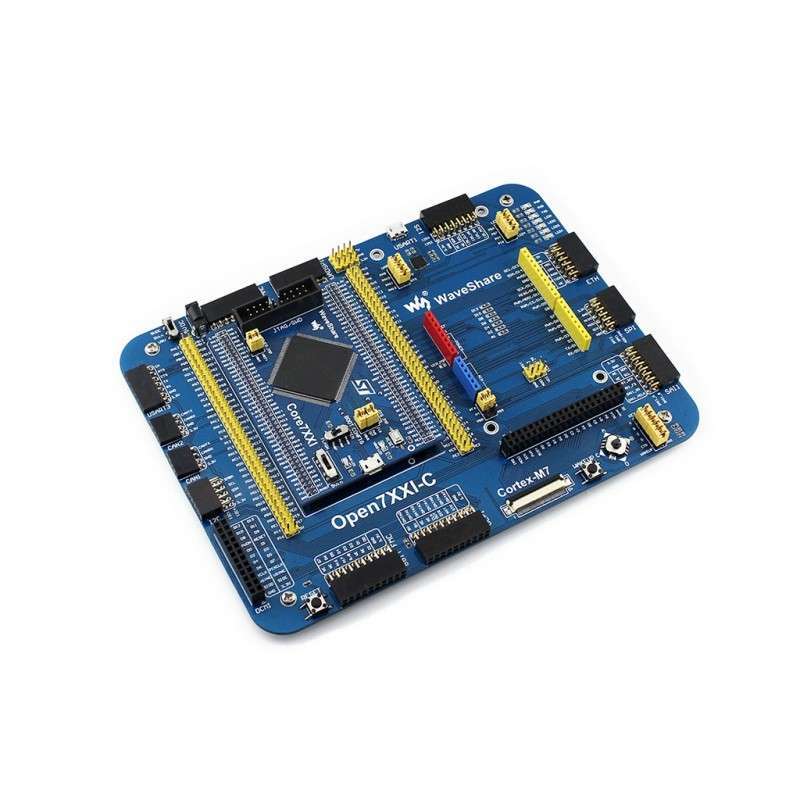



RLX COMPONENTS s.r.o. , Electronic Components Distributor.
RLX COMPONENTS s.r.o. , Electronic Components Distributor.
Open746I-C Standard, STM32F7 Development Board (WS-11473) for STM32F746I
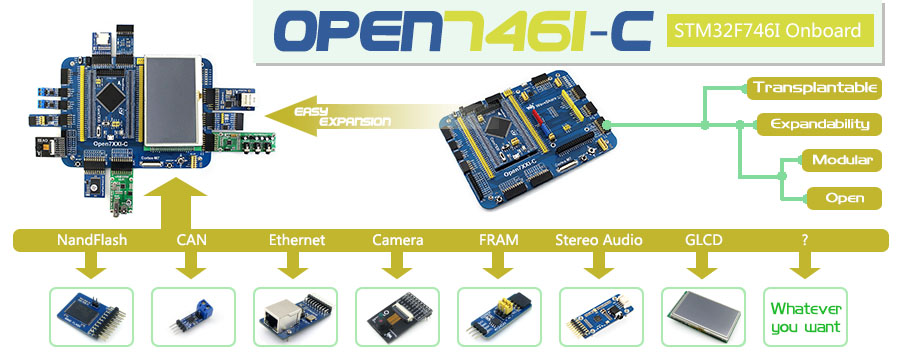
Open746I-C is an STM32 development board designed for the STM32F746IGT6 microcontroller, consists of the mother board and the MCU core board Core746I.
The Open746I-C supports further expansion with various optional accessory boards for specific application. The modular and open design makes it the ideal for starting application development with STM32 series microcontrollers.
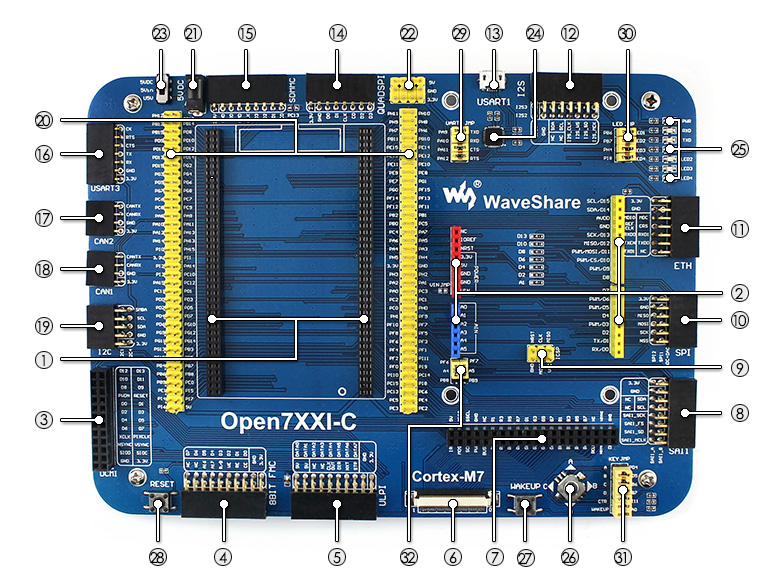
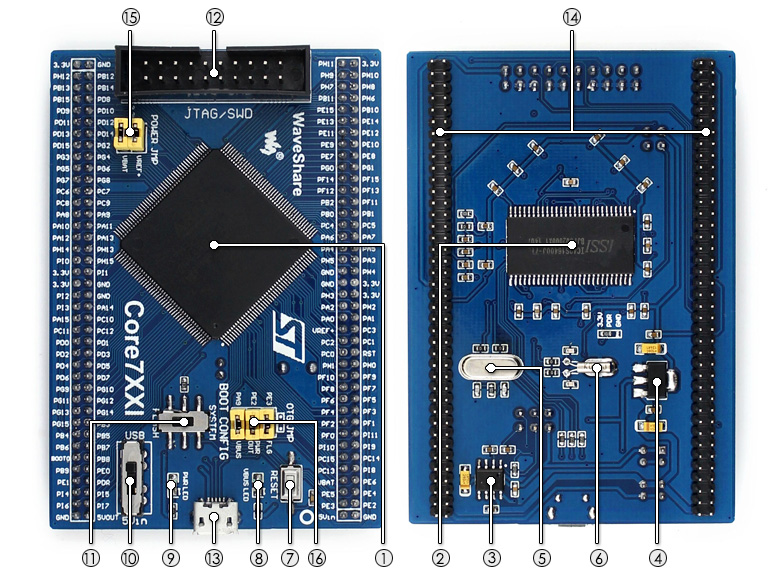
The figure 1, and 2 show the header pinouts of JTAG/SWD interface
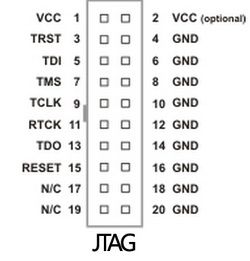
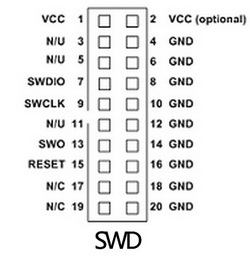
Wiki: www.waveshare.com/wiki/Open746I-C
